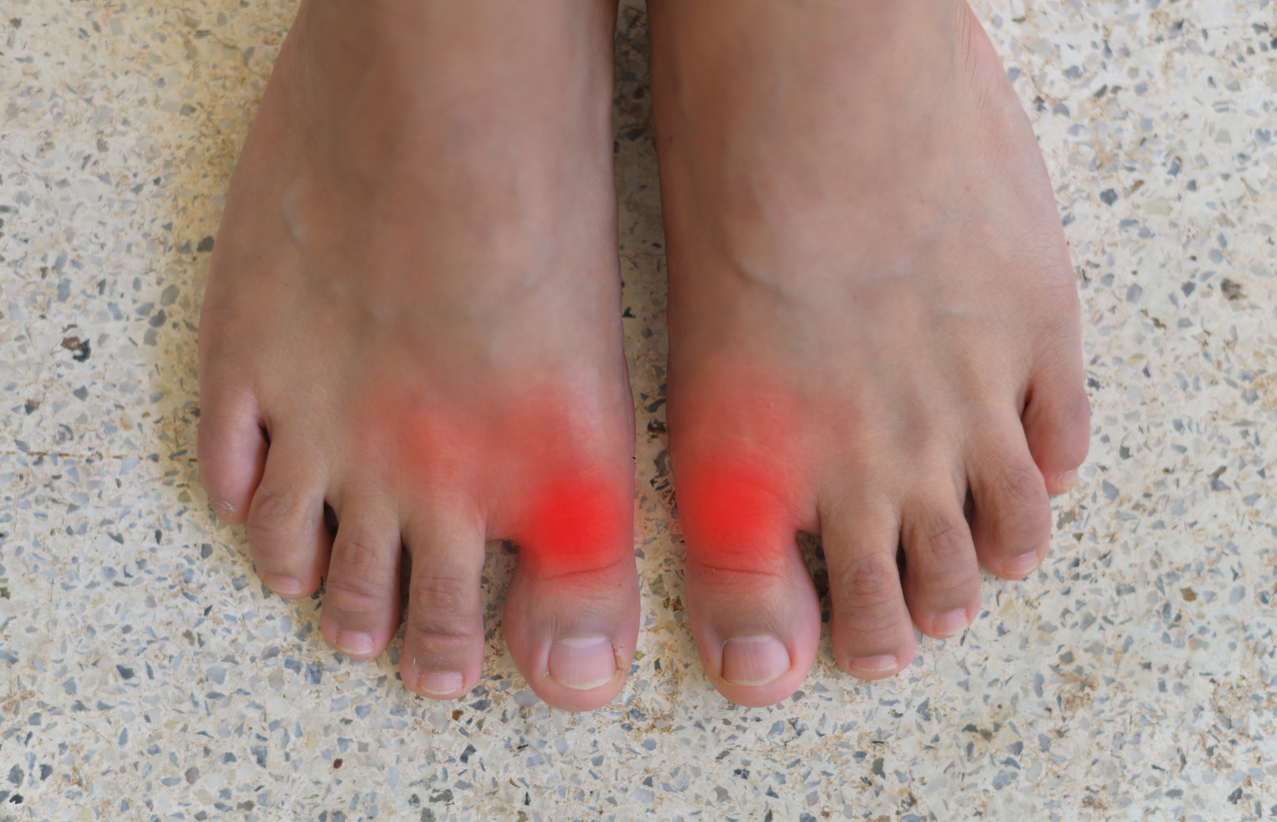
Gouty Arthritis
There are several forms of arthritis that cause joint pain, stiffness, and impaired mobility. One type is gouty arthritis, also known simply as gout. Gout affects up to 8% of American adults and is more common in men until the age of 60.
The story of gout starts with purines, a class of amino acids found normally in your body. They are very important in cells wall structure. Purines are also found in high quantities in certain foods such as red meat, organ meats, fish, and shellfish. Uric acid is a bypass product of purines. Normally, your kidney can excrete uric acid. An increase in cell turnover, abnormal kidney function, certain medications and consumption of certain foods could increase your risk of elaveted uric acid level in blood streatm promoting development of gout.
Dr. Ekaterina Soforo, MD, a board-certified rheumatologist from Lakeshore Orthopaedics, says, “When there are high uric acid levels in the bloodstream, crystals made of uric acid can form within joints.” These uric acid crystals are thin, needle-shaped and can be quite irritating for joints lining therefore causing swelling and pain of the affected joint. “The classic symptom associated with a gout attack is sudden pain and swelling in the big toe, so-called Podagra. This pain is severe, and many patients have difficulty walking and moving. This is how gout usually starts, but flare-ups can occur in other joints, particularly if the gout is not treated and repeated flare-ups occur over time. We call this chronic gout.”
Gout differs from the other forms of arthritis. “The risk factors for gout differ from the risk factors for osteoarthritis or rheumatoid arthritis,” said Dr. Soforo. “Knowing the risk factors can help you determine if you are at high risk of developing gout.”
Risk factors: ● Family history of gout ● Heart disease ● Certain medications such as those for high blood pressure ● Being male ● Eating high-purine foods ● Drinking alcohol ● Drinking sodas or other fructose-sweetened drinks ● Overweight or obese ● Having undergone gastric bypass surgery
Flare-ups can come and go or become persistent as the gouty arthritis progresses. Dr. Soforo says, “Treatment may involve dealing with an active flare-up or stopping flare-ups from happening in the first place. The short-term treatment for an active flare-up should include anti-inflammatory medications.”
Long-term treatment and prevention includes medications that low uric acid level in the blood stream. Elevated uric acid level (hyperuricemia) can be associated with other serious medical problems, including hypertension, diabetes, kidney insufficiency, strokes, heart attacks and dementia. Deposits of uric acid crystals around joints and cartilage can lead to irreversible bone damage and joints deformities causing a lot of muscular-skeletal disabilities. Fortunately, most patients can manage their symptoms with medications to treat gout and hyperuricemia that are very effective in lowering uric acid.
Dr. Soforo has over 20 years of expertise in the diagnosis and treatment of gout, and recently opened a Gout Clinic under the roof of her Rheumatology Clinic at Lakeshore Orthopaedics. She has expertise in treating simple and complicated cases gout and is available to see patients with acute attacks within 24-48 hours. To schedule an appointment with Dr. Soforo at Lakeshore Orthopaedics, call (920) 452-6124 or visit lakeshoreorthpaedics.com for more information.
SOURCES: https://www.arthritis.org https://medlineplus.gov/gout.html



